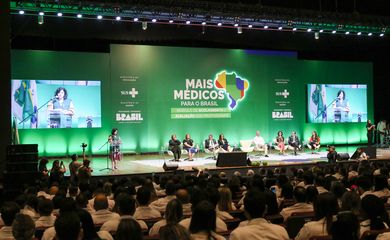Brazil has 575,930 active doctors, 2.81 for every thousand people

Brazil currently has 575,930 active doctors, a ratio of 2.81 professionals for every thousand people—the highest ever recorded in history. The data were released Monday (Apr. 8) by the Federal Council of Medicine, which conducted the study.

Since early in the 1990s, the number of doctors in the country has more than quadrupled—from 131,278 to the current number recorded in January 2024. In the same period, the Brazilian population surged by 42 percent—from 144 million to 205 million—as per statistics bureau IBGE.
The number of medics has therefore grown eight times more than the general population. Between 1990 and 2023, the medical population increased by an average of five percent a year, compared to an average increase of one percent a year in the general population.
The sharpest rise in the number of doctors occurred between 2022 and 2023, 538,095 to 572,960, up 6.5 percent. With a rate of 2.8 doctors per thousand citizens, Brazil now has a rate similar to the one recorded in Canada, and surpasses countries such as the US, Japan, South Korea, and Mexico.
In the council’s view, the boom was driven by factors such as the expansion of medical education—especially in the last two decades—and the growing demand for health services.
Distribution
The study also shows that the higher number of doctors over the last few decades has not resulted in equal distribution nationwide. The Southeast has a higher proportion of professionals than the national average of 2.81 per thousand inhabitants. The region has the highest density and proportion of doctors: 3.76 per thousand people as well as 51 percent of all doctors, while being home to 41 percent of the Brazilian population.
In contrast, the North has the lowest proportion of doctors (1.73 per thousand residents), significantly below the national average. The Northeast, with 19.3 percent of doctors and 26.8 percent of the population, has a ratio of 2.22 medics per thousand inhabitants, also below the national average.
The South, with 15.8 percent of doctors and 14.8 percent of Brazilians, has 3.27 doctors per thousand nationals, while the Central-West, with nine percent of doctors and 8.1 percent of the population, has 3.39 per thousand inhabitants, both above Brazil’s average.
In the capital cities, the average number of doctors per thousand inhabitants is 7.03, compared to 1.89 in the countryside as a whole. Looking at the extremes of this distribution, Vitória has the highest density: 18.68 per thousand citizens. On the other hand, in the interior of Amazonas, the density is 0.20 medics per thousand people.
“Increasing the number of doctors is too simplistic. We need a care network that starts with primary care. This number of doctors is not worth celebrating. We need to be concerned about their training, about keeping them in a continuous learning process. A medical degree is not the conclusion. Doctors need to keep up to date,” said study supervisor and adviser Donizetti Giamberardino.




